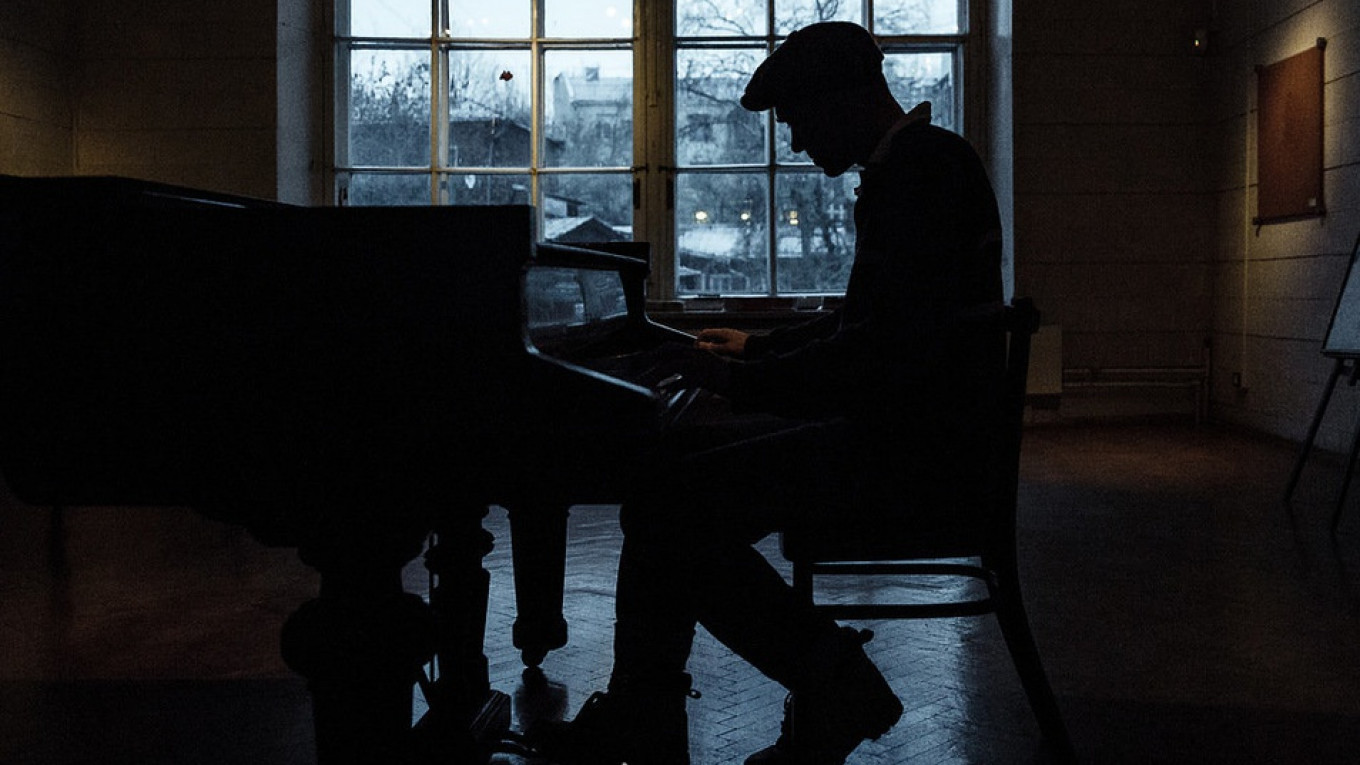If you’re afraid of the dark or somewhat claustrophobic, “Atlas VMayakovsky” is probably not the exhibition for you. But if you’re eager to embark on a journey, stumbling upon artifacts and making connections between the famous poet Vladimir Mayakovsky and the world of the avant-garde, this event may make the perfect night out.
“Atlas VMayakovsky” is being held at the Anna Golubkina Memorial Studio while the house museum is under construction. The installation is a collaboration of the Mayakovsky Museum, the Archive of Literature and Art and the Tretyakov Gallery, whose curators consulted with artists and philosophers to bring the intellectual world of Mayakovsky to life.
“At the heart of the project is an attempt to actualize the past and discover the connections within the diversity of the accidents that surround us,” reads the exhibition’s webpage. “‘Atlas’ is an attempt to map chaos.”
The event consists of an installation tour followed by a screening of the film “VMayakovsky,” directed by Alex Shein and shown only here. The tour comprises three consecutive exhibition halls within the old mansion, called “Ruins,” “Workshop-Laboratory” and “Archive-Reliquary.” Each section represents one aspect of Mayakovsky’s legacy: the artistic and political legacy he inherited, the intellectual world in which he engaged and the politicized way in which he is remembered.
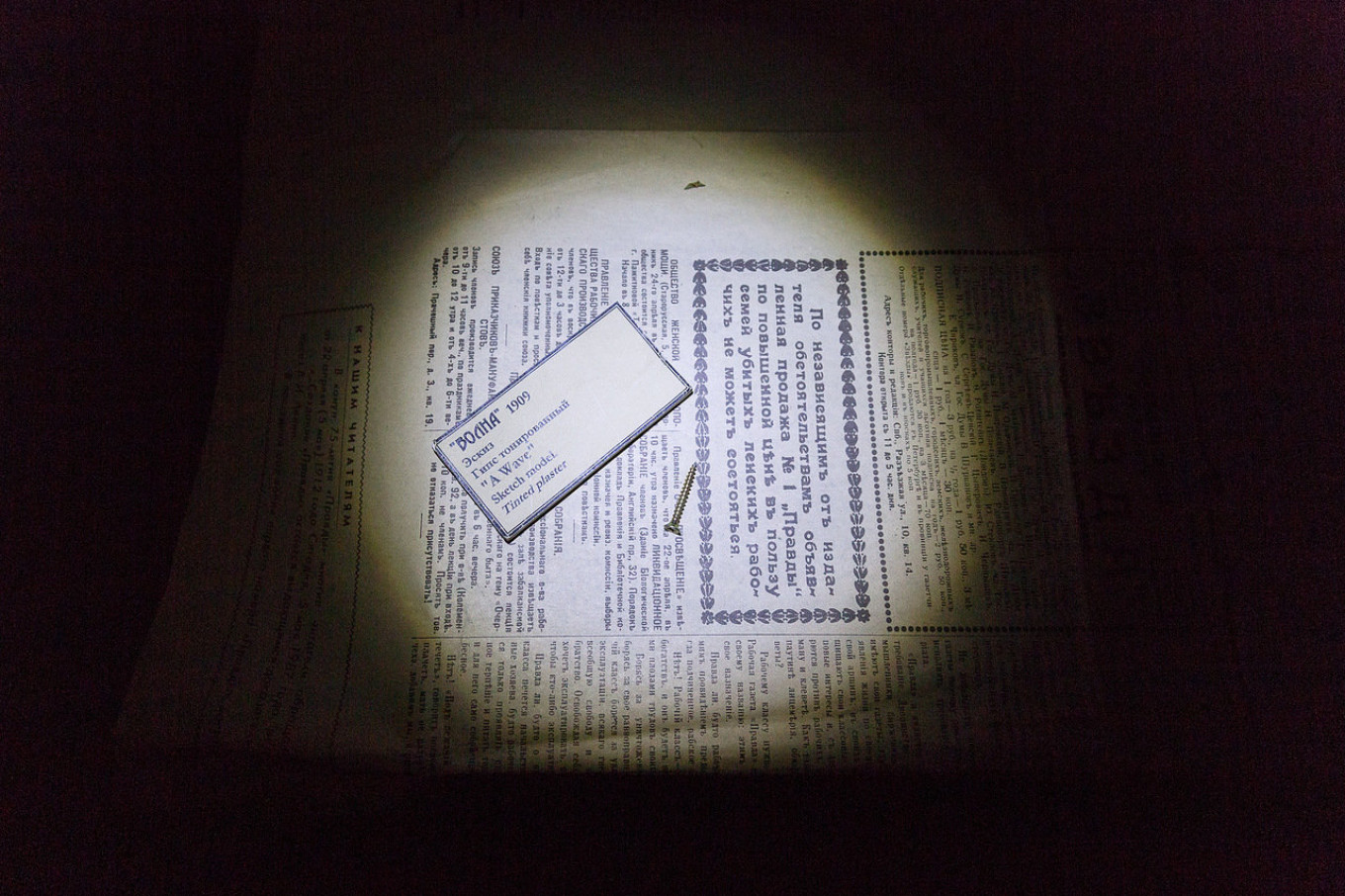
Ruins, Rebirth, Remembrance
Visitors to the exhibition are instantly plunged into total darkness. They are handed flashlights with dim red light bulbs and invited to reconnoiter through the pitch blackness for the next 15 minutes. In this stage of reconstruction, the Anna Golubkina house resembles an abandoned, old-order mansion that is an eerie setting for this journey through the dark.
This is the phase called “Ruins.” As visitors wander into rooms and hallways both upstairs and down, their torches shed eerie light on Soviet-era photographs, newspapers, books, paintings and other objects scattered around the space. There are some explicit references to Mayakovsky, such as poetry or newspaper clippings, and a rack of coats reminiscent of his famous overcoat. But for the most part, “Ruins” immerses the viewer into the world where Mayakovsky’s art was born. If you make it to the back of the exhibition hall, you'll stumble into a reconstructed darkroom that blasts out patriotic Soviet music. In a conjoining abandoned artists’ studio, an old newscast plays on a loop.
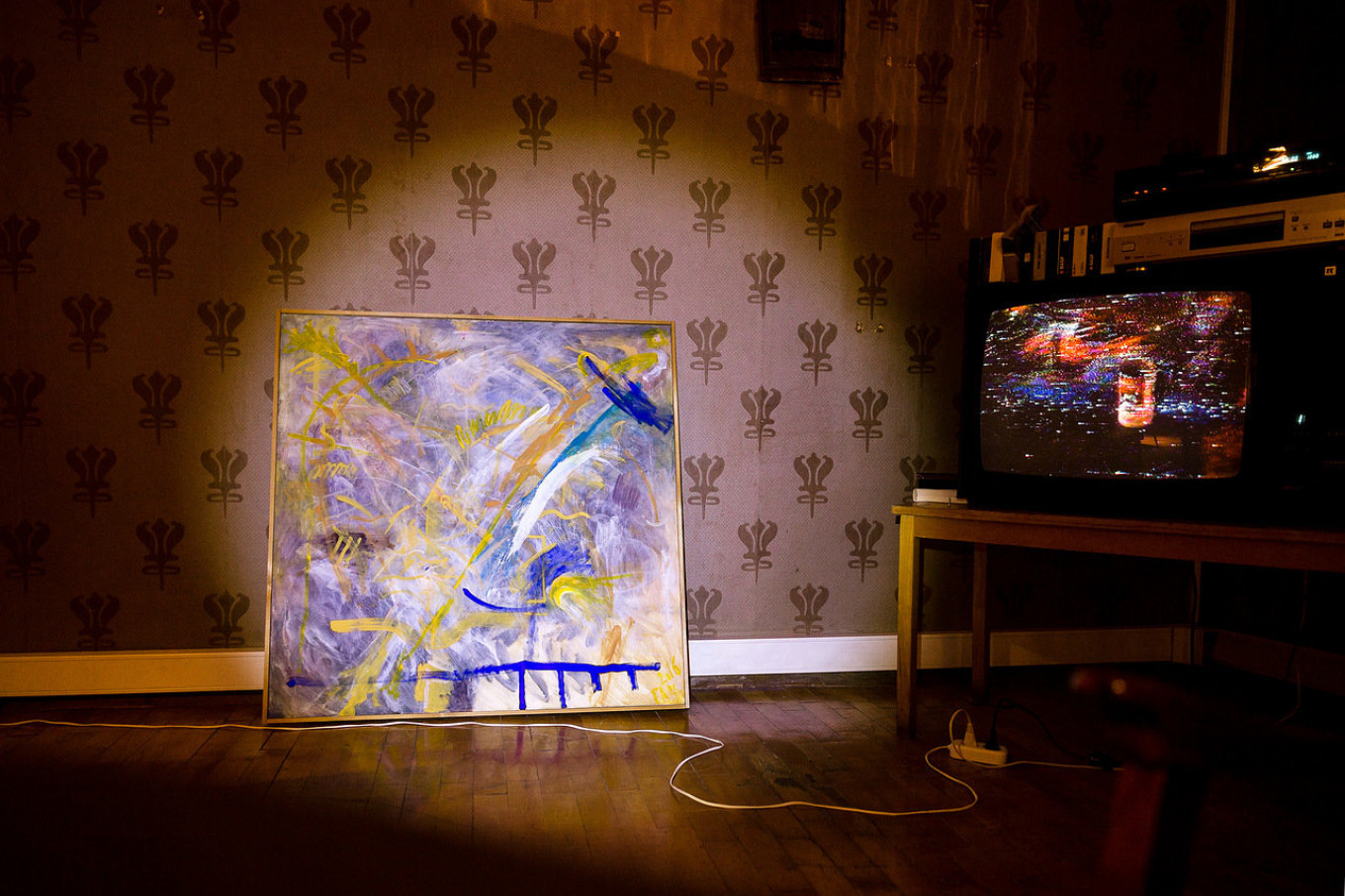
After rummaging through “Ruins,” visitors are ushered through a sculpture garden and into the next phase of the installation, “Workshop-Laboratory.” Exhibition-goers take in a well-lit, homey space, where webbing from the ceiling connects the heaps of clutter that fill the area. This is Mayakovsky’s intellectual world, where his art is literally connected to those he worked with and those he inspired.
“Workshop-Laboratory” is divided into three separate rooms, representing a studio, hallway and bedroom. The interior takes on a scrapbook-like quality, with architectural digests and blueprints, paintings, photos and poetry strewn about a piano and myriad tables and pinned to cork boards. The room is chaotic, piled up with artifacts that visitors are invited to sift through and attempt to piece together.
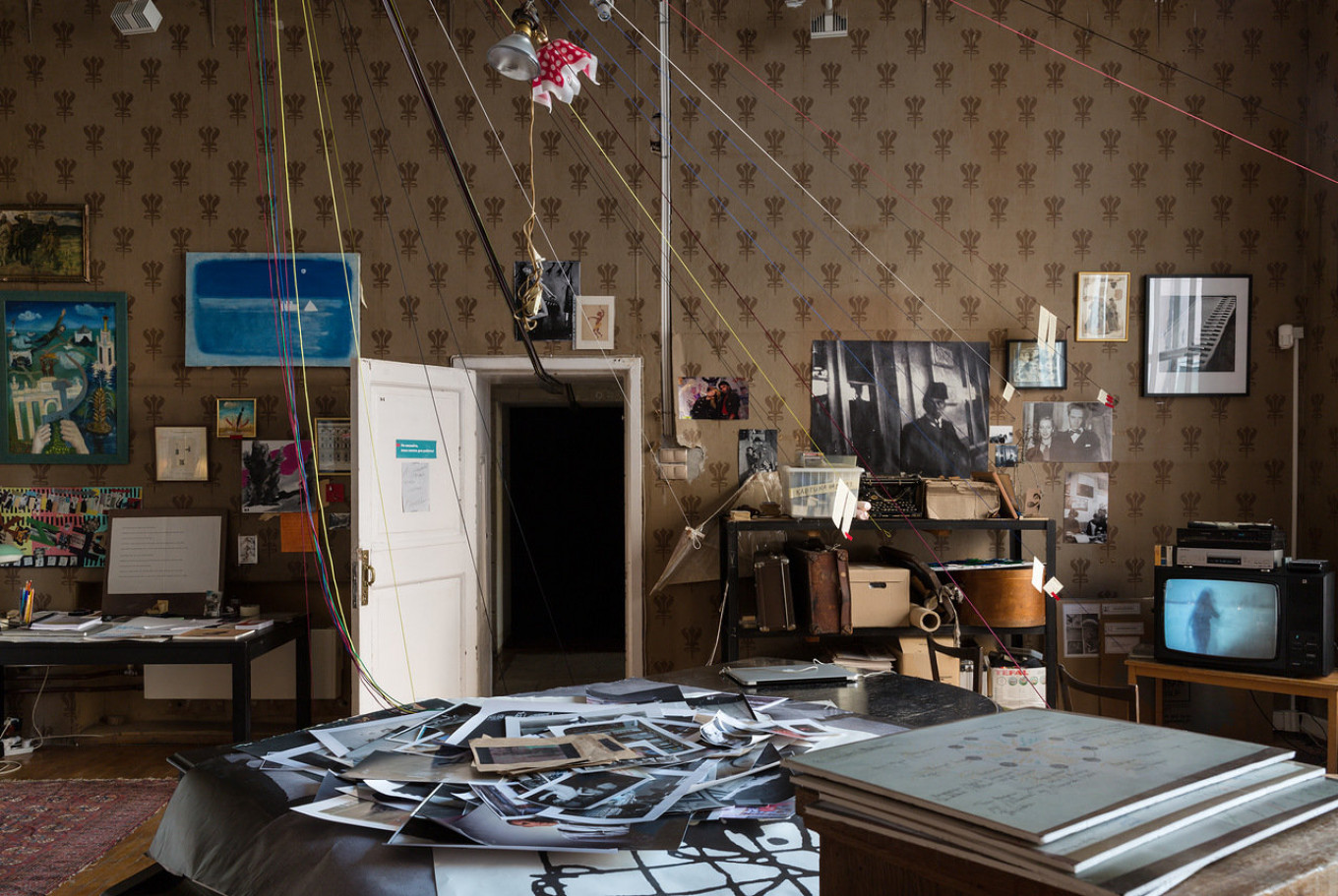
Here we see Mayakovsky’s as a living artist: typewriter excerpts of his poetry hang from the ceiling along with photos of this handsome artist in the 1920s. But it is not only Mayakovsky who inhabits this space. He mingles with representations of Oscar Wilde, Kazemir Malevich, Victor Tsoi and Kino, David Bowie, Marilyn Manson and hundreds others. 1980s new wave music blares from a stereo, in sharp contrast to the proud Soviet anthems that blasted in “Ruins.” “Workshop-Laboratory” escapes time to situate Mayakovsky as a major actor, and even initiator, of the avant-garde.
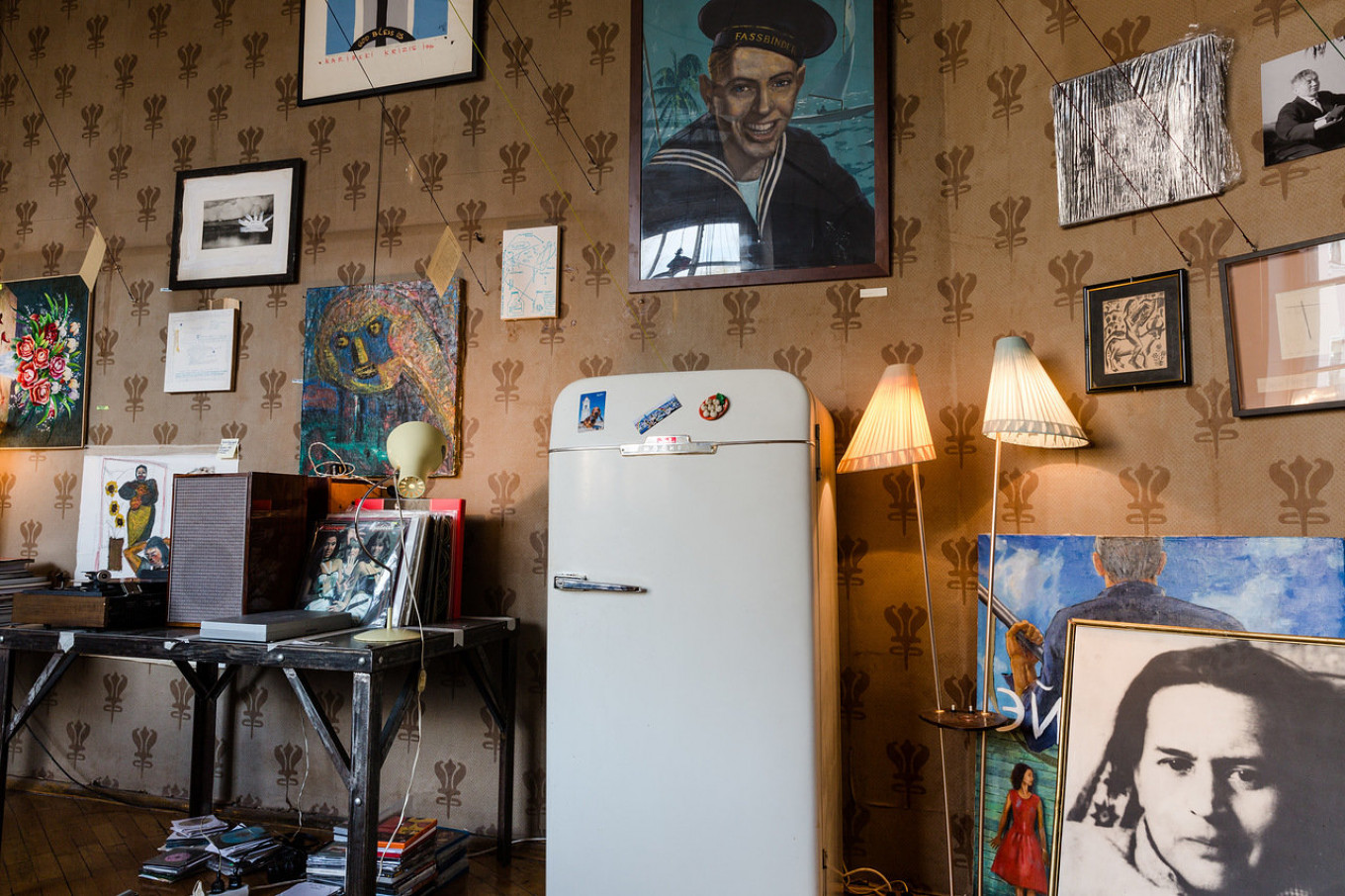
The final stop on the tour is “Archive-Reliquary.” Gone is the chaos of the previous two halls. This black-curtained room is sterile and organized. Again, the artifacts in boxes around the space are still connected by webbing to the ceiling, where Mayakovsky’s script stretches above the viewers’ heads in vivid light. But now the artifacts (which viewers are still encouraged to pick up and play with) more strictly resemble those of a typical museum. There are dusty bound volumes of Mayakovsky’s complete published poetry, statuettes and busts of Russian poets, old ticket stubs to Mayakovsky’s plays. Photos of Mikhail Gorbachev and Boris Yeltsin smile up from the boxes. “Archive-Reliquary” represents the stagnant nature of Mayovsky’s legacy, and that of the Soviet era as a whole.
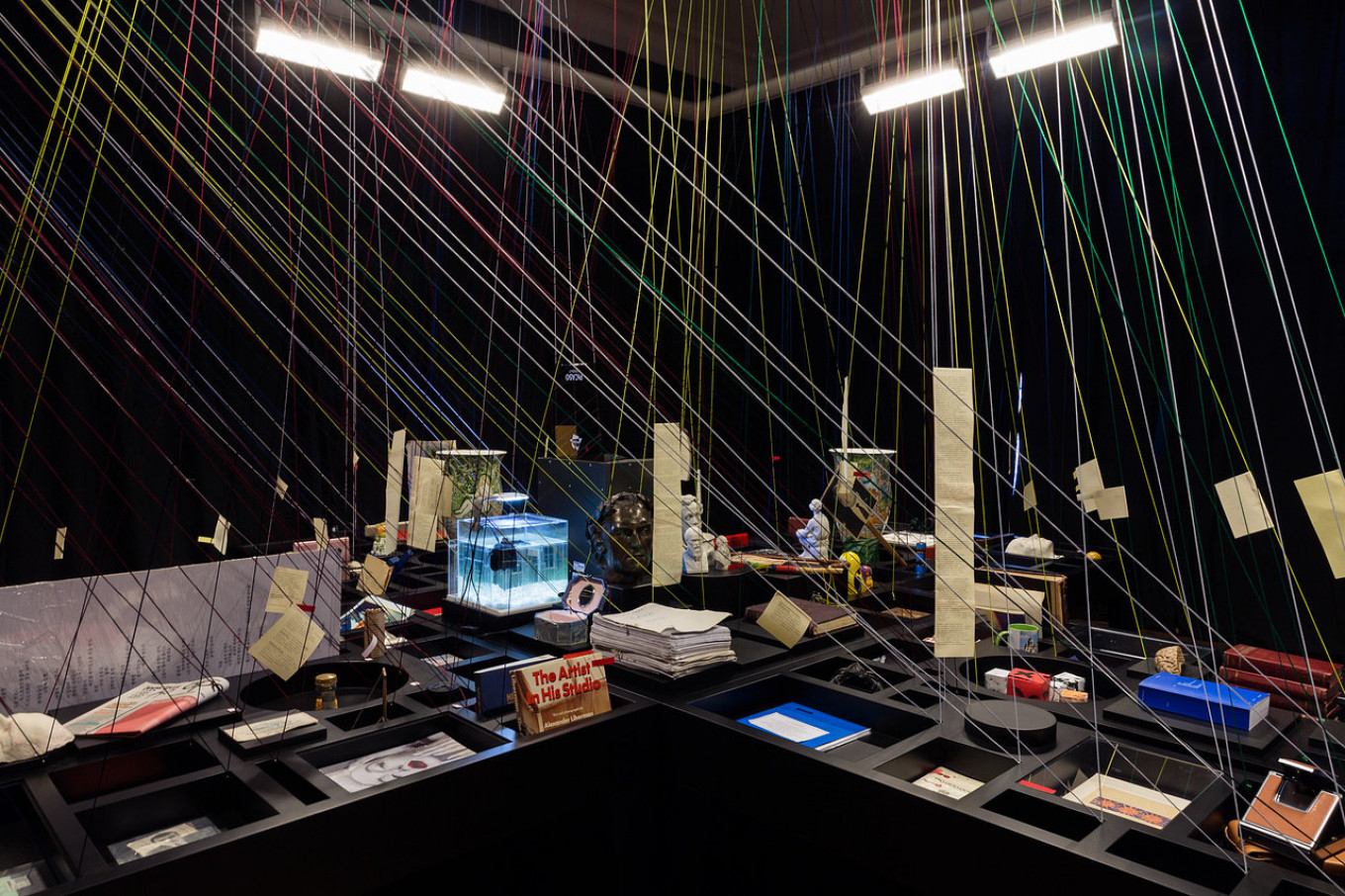
Yet whimsy is still at play in this section. Some artifacts at first seem out of place, such as a twirling ballerina music box, an aquarium filled with real fish and a number of documents referencing films by Alexander Shtein. As we will see in the final stop of the evening, these objects come together on the silver screen.
Film finale
The film “VMayakovsky” premiered in October 2017. Part documentary, part art film and part drama, the movie invites insight into Mayakovsky’s character as well as his poetry, with special attention paid to the women who influenced his life. While the film sets out as a depiction of actors rehearsing a play about Mayakovsky, the lines grow blurred as they increasingly take on their characters of the people they are playing. The actors’ scenes are spliced with footage of contemporary protests in Russia and expeditions to Communist monuments in North Korea and Kutaisi. Artifacts from the excursion, such as the twirling ballerina, also appear in the film. This is a film about Mayakovsky, the world with which he grappled and the world he left behind.
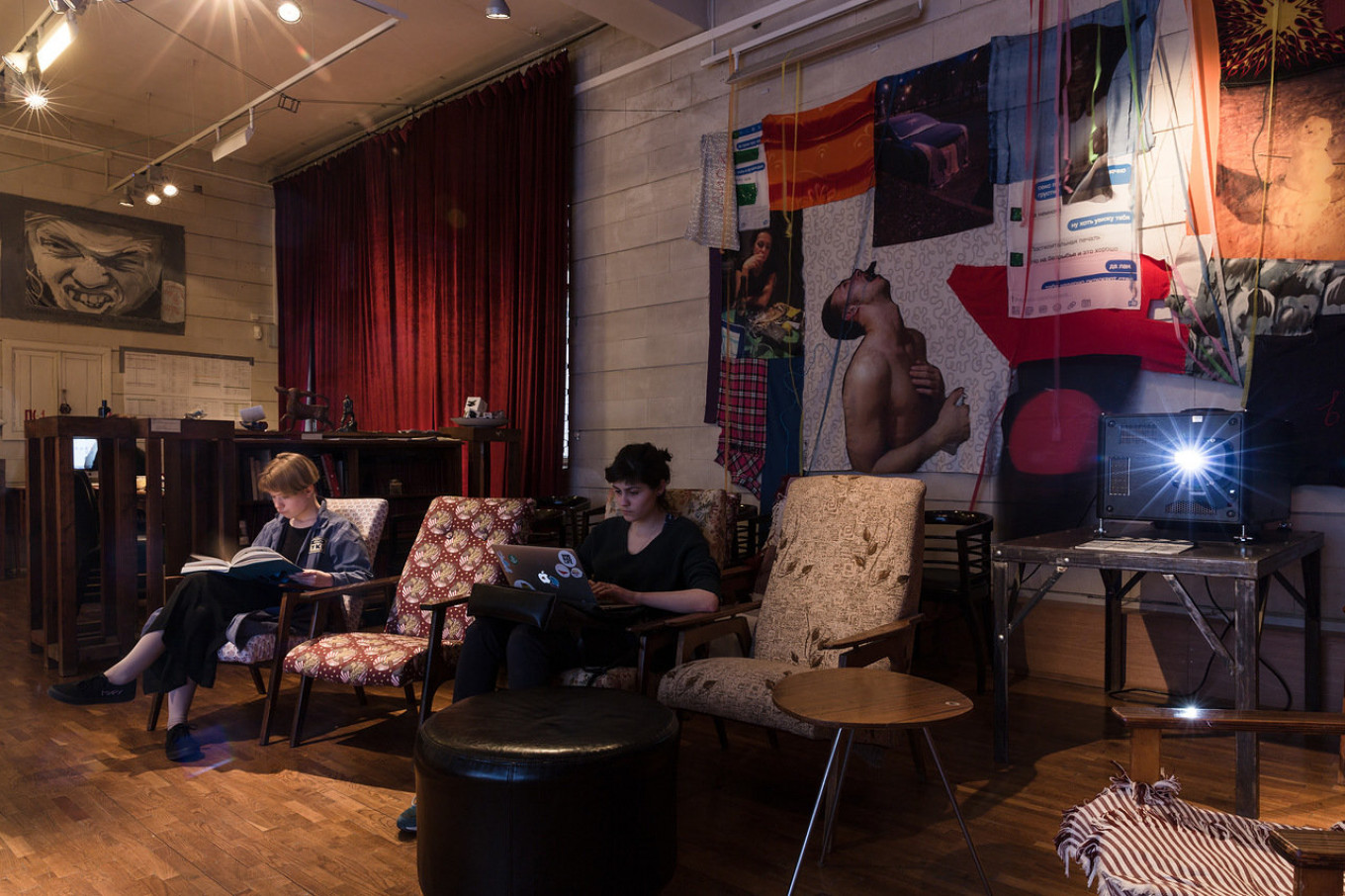
Devotees of Mayakovsky are sure to find value in the “Atlas VMayakovsky” exhibition, a chance to revel in their favorite poet while also rediscovering his connections to the greater world. But for newer initiates of Mayakovsky and the Russian art world, “Atlas VMayakovsky” offers an evening out to challenge their senses, explore an innovative art form and become totally immersed in 20th century art.
“Atlas VMayakovsky” runs through Nov. 30. The installation curation and the film are both in Russian with no English translation. The installation is only open at certain times of the week. Visitors can find the schedule and buy tickets at https://www.tretyakovgallery.ru/en/exhibitions/atlas-vmayakovskiy/.
Anna Golubkina Memorial Studio. 12 Bolshoi Levinsky Pereulok. Metro Smolenskaya.
A Message from The Moscow Times:
Dear readers,
We are facing unprecedented challenges. Russia's Prosecutor General's Office has designated The Moscow Times as an "undesirable" organization, criminalizing our work and putting our staff at risk of prosecution. This follows our earlier unjust labeling as a "foreign agent."
These actions are direct attempts to silence independent journalism in Russia. The authorities claim our work "discredits the decisions of the Russian leadership." We see things differently: we strive to provide accurate, unbiased reporting on Russia.
We, the journalists of The Moscow Times, refuse to be silenced. But to continue our work, we need your help.
Your support, no matter how small, makes a world of difference. If you can, please support us monthly starting from just $2. It's quick to set up, and every contribution makes a significant impact.
By supporting The Moscow Times, you're defending open, independent journalism in the face of repression. Thank you for standing with us.
Remind me later.


